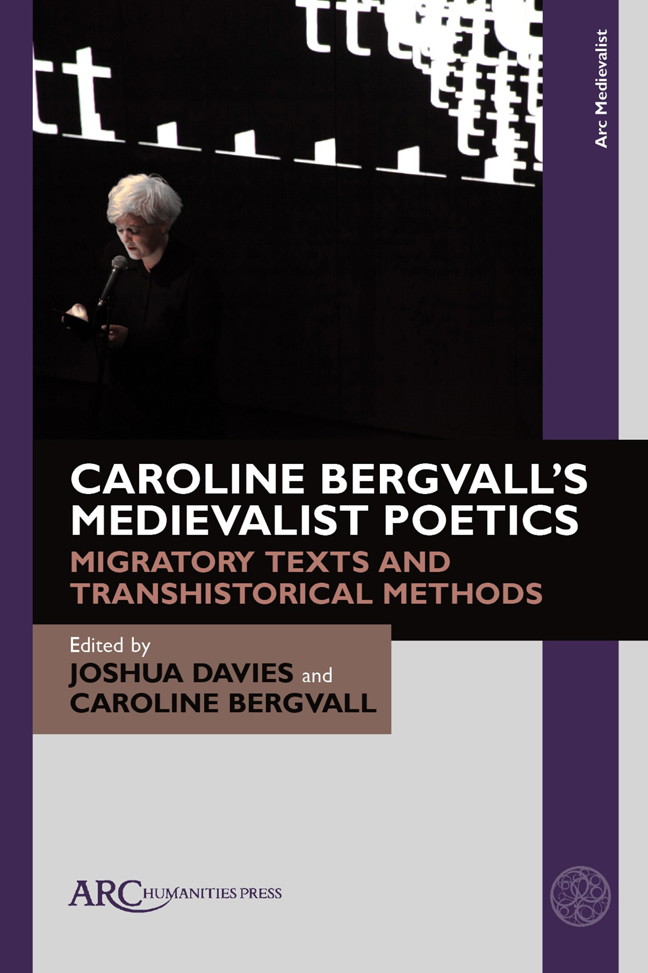Chapter 14 - Collective Poesy: The Disruptive Pleasures of Caroline Bergvall’s Alisoun Sings
Published online by Cambridge University Press: 20 February 2024
Summary
DURING AN INTERVIEW from the afterlife, Jack Spicer tells Hoa Nguyen that in making a poem, “you start with a syllable machine and see what ghosts you catch.” Similarly spirited, Caroline Bergvall’s Alisoun Sings channels a polyphonous “voice-clus-ter” of pop stars and feminist icons of art and literature, all centred around Alisoun, Chaucer’s Wife of Bath. Together across time, Bergvall and Alisoun form a “collective poesy” (104) through queer networks of affiliation to explore pleasure’s physical and linguistic role in disbanding the national ties that constrain us and allowing us to re- form in new, more livable configurations.
Refusing uniformity, Alisoun inhabits the gaps and overlaps between Middle and contemporary English. Of her own language, she says, “’tis a rich scrambljumbl of heav-ily crossbedded bitching tongues, folded like shells in tymo logick tension, so is ma usage a happy combiness, simple” (4). Her intermingled dictions make her simultaneous prox-imity to and distance from the modern world a feature of her speech itself, bringing her into an interstitial state of then-and-now-ness and allowing her to draw on all present and former times to imagine a way forward.
Bergvall describes the original Alisoun as a protofeminist for her refusal to be chaste—a serial wife, she defied convention dictating she should remain sexless after her first husband’s death. Bergvall’s Alisoun opts for “bountyful booties ov all kinds & kins entwined revling ydizzied” (2). This Alisoun’s queerness exceeds sex and the indi-viduals involved in it. Notably, she also recognizes contemporary queer genders as bio-diverse proliferations, which complement and expand possibilities for “femaled and dif-ferential beings” (50) rather than threatening cis womanhood: “biosex makes all kinds of flowerings / but the rest is cohabitation and cooperatings” (114). Our interdepen-dences point the way toward a “transformation of the worlde” through intimate connec-tion that engenders a “networked spirit of soul beings / against the isolation of the fear machine” (114). This is a queerness that doesn’t begin or end in the unit of the couple. It connects, unlimits, and animates us in multigenerational “energy fields” (114), where we can meet each other and move together toward a “larger future, collectivized without / sacrifice” (115).
Speaking to and through the poet in a rush of heady anachronism and often in the words of others, Alisoun knows everything Bergvall knows and more.
- Type
- Chapter
- Information
- Caroline Bergvall's Medievalist PoeticsMigratory Texts and Transhistorical Methods, pp. 129 - 132Publisher: Amsterdam University PressPrint publication year: 2023

